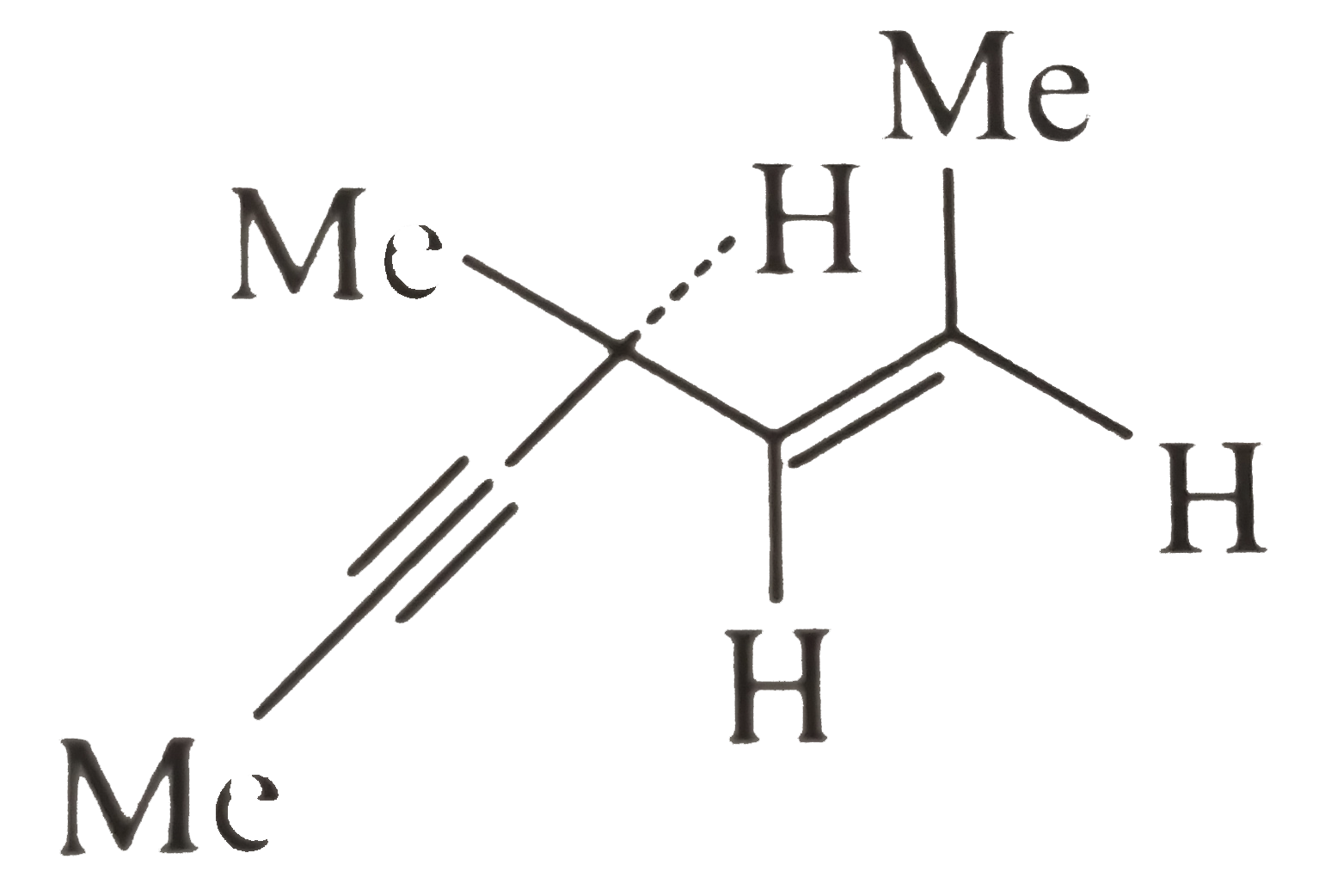Reduction of CH3CH2NC with hydrogen in presence of Ni or Pt as catalyst gives
CH3CH2NH2
CH3CH2NHCH3
CH3CH2NHCH2CH3
(CH3)3N
To solve the question regarding the reduction of isonitrile (specifically, CH3CH2NC) with hydrogen in the presence of a nickel (Ni) or platinum (Pt) catalyst, we will follow these steps:
1. Identify the Structure of Isonitrile:
The compound CH3CH2NC is an isonitrile, where the NC group indicates the presence of a carbon-nitrogen triple bond. The structure can be represented as:
\(
CH3-CH2-C \equiv N
\)
2. Understand the Reduction Process:
The reduction of isonitriles involves the addition of hydrogen (H2) across the triple bond in the presence of a catalyst. In this case, the catalysts are nickel (Ni) or platinum (Pt).
3. Catalytic Hydrogenation:
During catalytic hydrogenation, the isonitrile undergoes a series of steps:
- The carbon atom in the isonitrile acts as a nucleophile and attacks the hydrogen molecule (H2).
- The triple bond between carbon and nitrogen is broken, leading to the formation of a new bond between carbon and hydrogen.
4. Formation of an Amine:
As the reaction proceeds, the nitrogen atom will also become protonated (gaining a hydrogen atom). The reaction can be summarized as follows:
\(
CH3-CH2-C \equiv N + H2 \xrightarrow{Ni/Pt} CH3-CH2-NH2
\)
This results in the formation of a primary amine.
5. Final Product:
The final product of this reduction is CH3CH2NH2, which is ethylamine, a primary amine.
Conclusion:
The reduction of CH3CH2NC with hydrogen in the presence of Ni or Pt as a catalyst gives CH3CH2NH2, which is a primary amine.
---
The compound CH3CH2NC is an isonitrile, where the NC group indicates the presence of a carbon-nitrogen triple bond. The structure can be represented as:
\(
CH3-CH2-C \equiv N
\)
The reduction of isonitriles involves the addition of hydrogen (H2) across the triple bond in the presence of a catalyst. In this case, the catalysts are nickel (Ni) or platinum (Pt).
During catalytic hydrogenation, the isonitrile undergoes a series of steps:
- The carbon atom in the isonitrile acts as a nucleophile and attacks the hydrogen molecule (H2).
- The triple bond between carbon and nitrogen is broken, leading to the formation of a new bond between carbon and hydrogen.
As the reaction proceeds, the nitrogen atom will also become protonated (gaining a hydrogen atom). The reaction can be summarized as follows:
\(
CH3-CH2-C \equiv N + H2 \xrightarrow{Ni/Pt} CH3-CH2-NH2
\)
This results in the formation of a primary amine.
The final product of this reduction is CH3CH2NH2, which is ethylamine, a primary amine.
The reduction of CH3CH2NC with hydrogen in the presence of Ni or Pt as a catalyst gives CH3CH2NH2, which is a primary amine.
Topper's Solved these Questions
- AMINES BOOK - NCERT FINGERTPS ENGLISHCHAPTER - AMINES EXERCISE - Chemical Reactions
19 Videos
- AMINES BOOK - NCERT FINGERTPS ENGLISHCHAPTER - AMINES EXERCISE - HOTS
6 Videos
- AMINES BOOK - NCERT FINGERTPS ENGLISHCHAPTER - AMINES EXERCISE - Classification
2 Videos
- ALDEHYDES, KETONES AND CARBOXYLIC ACIDSBOOK - NCERT FINGERTPS ENGLISHCHAPTER - ALDEHYDES, KETONES AND CARBOXYLIC ACIDSEXERCISE - Assertion And Reason
15 Videos
- BIOMOLECULESBOOK - NCERT FINGERTPS ENGLISHCHAPTER - BIOMOLECULESEXERCISE - Assertion And Reason
15 Videos
Similar Questions
The treatment of CH3CH2COOH with chlorine in the
presence of phosphorus gives:
View Solution
Hydrogenation of the above compound in the presence of poisoned Pd catalyst gives:
View SolutionHydrogenation of the adjoining compound in the presence of poisoned palladium catalyst gives.

View SolutionAn isocyanide on reduction with hydrogen in the presence of platinum gives :
View SolutionAlkyl cyanides (CH3CN) when treated with hydrogen in presence
of Pt or with LiAlH4 produces same carbon number compound.
What is the formula of that compound ?
View SolutionReaction of benzene with isobutylchloride (CH3CH(CH3)CH2Cl) in the presence of anhydrous AlCl3 yields.
View SolutionBenzene reacts with CH3COCl in the presence of anhy AlCl3 to give
View SolutionOn taking 60 g CH3COOH and 46g CH3CH2OH in a 5 lit. flask in tle presence of H3O+ (catalyst), at 298K 44 g of CH3COOC2H5 is formed at equilibrium. If amount of CH3COOH is doubled without affecting amount of CH3CH2OH then, CH3COOC2H5 formed is
View SolutionWhich hydrogen in compound (E) is easily replaceable during bromination reaction in presence of light ?
CH3δ−CH2γ−CHβ=CH2α(E)
View SolutionThe compound CH3−CH3∣C=CH−CH3
on reaction with NalO4 in the presence of KMnO4 gives
View Solution
